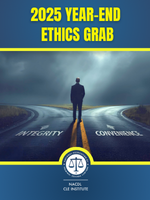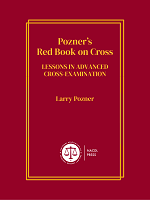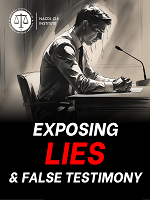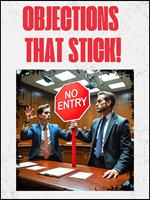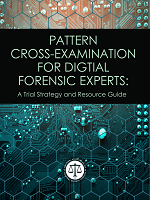State Information
In February 2020, the National Association of Criminal Defense Lawyers asked its membership about how it communicated with clients in custody. The survey focused particularly on lawyers’ ability to communicate with their detained and incarcerated clients. The below data is focused on findings regarding confidentiality, a key requirement of attorney-client communication.
| Facility | Phone | Video | In-Person Want to submit a correction or additional information about facilities you visit? Tell us in this form. | |
|---|---|---|---|---|
| Fulton County Jail |
|
|
|
|
| Burke Co., Webster Detention |
|
|
|
|
| Douglas County Jail |
|
|
|
|
| Walton County Jail |
|
|
|
|
| Douglas County Jail |
|
|
|
|
| Richmond County Jail |
|
|
|
|
| Forsyth County Detention Center |
|
|
|
|
| Jeff Davis County Detention Center |
|
|
|
|
| Seminole County Jail |
|
|
|
|
| Chatham County Detention Center |
|
|
|
|
| Robert A. Deyton jail (GEO) |
|
|
|
|
Federal Information
In the Eleventh Circuit, the general rule is that a Sixth Amendment violation occurs “when the government intentionally intrudes into an attorney-client relationship and therein obtains confidential information regarding the defense of the allegations and then uses that information to the defendants' detriment." {1} 1 United States v. Waters, No. 11-00012-KD, 2011 U.S. Dist. LEXIS 147369, at *9 (S.D. Ala. 2011) (citing United States v. Noriega, 764 F.Supp. 1480, 1488 (S.D. Fla., 1991)). The Circuit courts use a two-step analysis to evaluate these types of cases. First, they ask whether an attorney-client communication is actually protected from government interference; second, they ask whether the petitioner has been prejudiced by the intrusion.
First, to determine whether an attorney-client communication is actually protected from interference by the government, they ask whether the petitioner had a reasonable expectation of confidentiality in whatever communications were obtained by the government. {2} 2 United States v. Noriega, 764 F. Supp. 1480, 1484-45 (S.D. Fla. 1981) (citing United States v. Noriega, 917 F.2d 1543, 1551 (11th Cir. 1990)). If the attorney-client communications were “(1) intended to remain confidential and (2) under the circumstances were reasonably expected and understood to be confidential,” then they are protected by the Sixth Amendment from government intrusion. {3} 3 Id. The Circuit appears to use this test at every stage of the proceedings, as they have also applied it in the habeas context. {4} 4 Tappen v. Jones, No. 4:13cv345-RH/CAS, 2016 U.S. Dist. LEXIS 54953, at *17-23 (N.D. Fla. 2016). The first prong of the test is subjective, and the second is objective. The party claiming the Sixth Amendment violation has the burden of proving that the attorney-client communications were confidential. {5} 5 United States v. Mitchell, No. 3:11-cr-248(S1)-J-34TEM, 2013 U.S. Dist. LEXIS 102092, at *45 (C.D. Fla. 2013) (citing United States v. Schaltenbrand, 930 F.2d 1554, 1562 (11th Cir. 1991)).
Courts’ analysis of this test generally revolves around whether the petitioner’s expectation of confidentiality was reasonable. Courts have found that a petitioner’s expectation of confidentiality was not reasonable when there were non-represented individuals at a meeting with the petitioner and his attorney,{6} 6 United States v. Bell, 776 F.2d 965, 972 (11th Cir. 1985), where deputies were present during an attorney-client conversation,{7} 7 Tappen, 2016 U.S. Dist. LEXIS 54953, at *30–34, and when the petitioner knew that his calls were being monitored based on an “unambiguous” recorded message prior to his call and a handbook given to him by the jail. {8} 8 United States v. Landers, NO. 1:12-CR-88-TWT-GGB, 2012 U.S. Dist. LEXIS 177403, at *13–14 (N.D. Ga. 2012); See also United States v. Mitchell, No. 3:11-cr-248(S1)-J-34TEM, 2013 U.S. Dist. LEXIS 102092, at *56–57 (M.D. Fla. 2013). By contrast, one court suggested that the petitioner’s expectation of privacy was reasonable where the petitioner was advised that the prison had a policy of not recording “properly placed” attorney-client calls, but the prison did not sufficiently explain what “properly placed” meant. {9} 9 Noriega, 764 F. Supp. at 1486–87. In another case, the court found a petitioner’s expectation of privacy was reasonable where the petitioner heard a recorded message explicitly excluding attorney-client calls from being recorded prior to calling his attorney. {10} 10 United States v. Walker, NO. 2:10cr186-MHT (WO), 2011 U.S. Dist. LEXIS 76389, at *7–9 (M.D. Ala. 2011). This case law suggests that petitioners who either did not know their calls were being recorded or monitored, or did not receive a sufficient explanation regarding how to speak to their lawyers privately, will have a better chance of meeting their burden under this test.
If the court finds that there was interference with the attorney-client relationship, it then determines whether the petitioner has been prejudiced by the interference. In United States v. Noriega, a leading case in the Circuit, the court named three factors—drawn from language in Weatherford—to consider in this analysis: “(1) whether the government's intrusion was intentional; (2) whether the prosecution obtained confidential information pertaining to trial preparations and defense strategy as a result of the intrusion; and, (3) whether the information obtained produced, directly or indirectly, any evidence used at trial, or was used in some other way to the defendant's substantial detriment." {11} 11 Noriega, 764 F. Supp. at 1489 (citing Weatherford v. Bursey, 429 U.S. 545, 558 (1997)). If any one of these factors is not met, courts in the Circuit will generally find that the petitioner was not prejudiced by the violation. For example, in Noriega, the court found that the government’s interference was not intentional, and that it led to no adverse impact on the defendant. {12} 12 Id. Accordingly, “[t]here being no intentional intrusion, no benefit to the prosecution, and no harm to Noriega's defense, there was no prejudice and therefore no Sixth Amendment violation." {13} 13 Id.
Proving these factors seems to be a particularly high bar in this Circuit. For example, in Noriega, the court found that the intrusion was not intentional where the prosecution team “took positive steps to screen out any attorney-client conversations from the tapes subpoenaed from [the detention facility],” without doing any specific fact-finding as to how the tapes in question were not screened out. {14} 14 Id. And in United States v. Waters, the court declined to find that the intrusion was intentional even when the government did not act in accordance with its own screening-out policy because “there was no evidence that the government set out to discover privileged information through the search." {15} 15 Waters, 2011 U.S. Dist. LEXIS 147369, at *10–11.
In terms of the second factor, the Court of Appeals has found that even when a defense attorney was working as a confidential informant and recorded conversations with his client pertaining to his case, the information obtained was not confidential because the motion discussed was in the public record. {16} 16 United States v. Ofshe, 817 F.2d 1508, 1515 (11th Cir. 1987). That court also found it significant that nothing about the case was communicated directly to the AUSA assigned to the case. On the other hand, language in Noriega suggests that the information does not have to be in the prosecutor’s possession—the prosecution team having the confidential information is enough. {17} 17 Noriega, 764 F. Supp. at 1489.
Regarding the third factor, the Circuit requires that the information gained from the interference be used in some way to benefit the prosecution or harm the defendant. Generally, courts have declined to find prejudice unless the information was used as evidence in trial or in an indictment. {18} 18 See United States v. Ofshe, 817 F.2d 1508, 1515 (11th Cir. 1987); United States v. Bell, 776 F.2d 965, 973 (11th Cir. 1985); United States v. Waters, 2011 U.S. Dist. LEXIS 147369, *11 (S.D. Ala. 2011). However, I have not found cases where courts have considered whether the information “indirectly” produced evidence at trial or whether the information “ was used in some other way to the defendant's substantial detriment,” so these may be good areas to argue.



